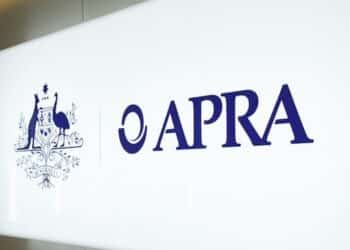Speaking to media on the sidelines of the AFA National Adviser Conference on the Gold Coast yesterday, Nick Hakes, AFA general manager of member services, partnerships and Campus AFA, said the industry will need more guidance from FASEA in the coming 12 months.
“What we’d like to see is certainty; we have such momentum behind us and advisers, licensees, manufacturers are actually already starting this higher education wave,” he said.
“What we can’t do is stall that momentum, and there’s been a little pent up frustration because people actually just want to get on with it, so what we need is certainty, because we’ve got the structure, and now we just need to know how that will work in practice.”
However, Mr Hakes said the lack of certainty from FASEA was to be expected at present as the body’s newly appointed chief executive Deen Sanders has only been in the role for a short time, adding that the gap between formation of FASEA’s board and the appointment of its CEO was a “reasonable timeframe”.
“They now have a lot of work to do between when Deen started and the 1st of January 2019, and so the consultation should start from now,” Mr Hakes said.
Mr Hakes’ comments followed the launch of the AFA’s new adviser competency framework at the conference, which is based on more than 1,600 written submissions from sector participants, which were then reviewed by a panel of over 500 experts to assess the skills and attributes advisers and clients found most important.
“[This research] is not the be-all and end-all, it’s the start – not just for FASEA but licensees and practitioners and manufacturers,” he said.
“We don’t want to tell FASEA what to do, however as a key stakeholder we want to unify lots of different voices in the market (the adviser, the client, the licensee, the manufacturer, the academic) and we want to present this unified voice for them to draw upon.”




I’m a little confused as to why it’s so confusing?
All of us should now be ADFP (min) qualified which means you’re eligable to begin your Grad Dip. Once the Grad Dip is completed, you’re eligable to begin the Masters.
ADFP > Grad Dip 8 subjects (2 years) > Masters 4 subjects (1 year).
4 years until 2024.
Plenty of time to either get cracking or plan your exit strategy 🙂
Dude, Grad Dip FP (AQF8) will be enough. No need to stress everyone out about getting a Masters.
Says who? Please site your source because FASEA haven’t stated anything yet and they are the ones who get to decide what ‘degree equivalent’ means.
[quote=Anonymous]The requirements are already out there, you have until 2024 to get your study. Stop complaining about it, and start doing![/quote]
Dangerous nonsense you are spouting! My time is far too valuable to go off and act on fairy floss speculation about what the supposed’ new requirements are. What an inane comment to make – truly! I can just see someone going off, spending thousands and dozens of hours completing a course of action that we were all ‘certain’ would be the requirement only to then see something released from this sham arrangement called FASEA that contradicts not only everything they said in the past BUT ALSO the study you’ve just bought and paid for with dollars and time away from your family and clients! PLEASE don’t go spouting this rubbish before the current reigning industry idiocy puts something in writing that CAN be relied upon to stay in force.
Yeah ok, I understand the frustration. Nonetheless FASEA will have to work with the limited number of qualifications held and those on offer. There is really only 8 indicators; DFP (old and new), ADFP, relevant degrees (pretty sure you can work that out as there is existing guidance from several sources suggesting Business, Commerce, Economics and Law are ok), Grad Cert/Grad Dip FP, Masters FP and CFP (legacy and current). It’s not as if there are unlimited pathways for FASEA to assess, With these 8 LIMITED pathways, not really that hard to work out where this is headed.
The requirements are already out there, you have until 2024 to get your study. Stop complaining about it, and start doing!
Start doing what? Yes we could start a degree ( a degree in what hasn’t been established yet) or we could enrol in some post graduate studies (but again degree equivalence hasn’t been established). So stop complaining about people complaining. The truth is we don’t know what we have to study yet hence the massive fustration.
Yeah we do know what to study. A lot of bad posts going on here. Very few people are going off to study a standard 3 or 6 year, 24 subject undergraduate University degree. Relevant – that is FP – post graduate qualifications (8 Grad Dip, 12/16 Masters subjects) will get you there IF you don’t already have an undergraduate degree. Or you can wait for the bridging course to degree if you have the ADFP already. Simples.
Study what? I have CFP (which is Masters equivalent) with a non-financial Masters degree. Do I have to study or not? And if so, what do I have to study? According to the FPA, “probably” I won’t require extra study. But if FASEA doesn’t know, how would the FPA know? Add TASA and the new exam circa 2019/2020, and it is all very unclear, leaves little time for planning. My previous licensee (an FPA Professional Practice with 100+ advisers) was clueless and behind the ball with regards to professional development. So poor guidance from regulator, professional bodies and licensees as far as I’m concerned.
This is so simple. To answer your questions Anon2: a) did you do all 5 CFP units and if not what did you do and when, b) do you have any other FP qualifications such as DFP 4 subjects or ADFP 8 subjects? If so what and when?
I hope it is simple, but until it’s in black and white, it’s not simple as far as I’m concerned.
To answer your question, all 5 CFP units including the exam (in the last 3 years), plus all DFP and ADFP subjects (in last 10 yrs), and exceeding CPD requirements annually (naturally).
Cheers.
Ok, all your 5 units of CFP are POST GRAD level study, AQF8 then! Plus 8 ADFP subjects and unrelated degree. Only two outcomes; a) you’re good if current CFP program is degree equivalent which we will know in 2018 or b) you have to upgrade your ADFP with a bridging course within 5 years.
Much appreciated. That’s the clearest answer I’ve had so far.
You are an idiot !!
You are unclear – which idiot do you address – hard to tell in this comments section the way they have the comments hierarchy arranged! Please explain Pauline!
Deen is the right person to lead this body. he has done a great job previously, and has a deep understanding of professions, and hopefully the same will be emulated for our [b]wonderful[/b] profession. let’s be patient. at least we have the right guy for once rather than dud’s like that FPA ceo tweeting about his 4 x passions but doing sweet FA on $300k +
Our once great and proud industry and advisers are now held to ransom to flagellating self-interested sycophants absolutely possessed with being politically correct about everything they are seen to do for fear of losing their jobs. Be they politician, life company exec, industry shill or self centred special interest group spokesperson. Look at this absolutely disgraceful non-effort by FASEA. Such a low-level of professionalism I hesitate to even call it by that term. It is patently disgusting that their inaction is causing so much stress and uncertainty to advisers and their perception of their career future.
.
All of them should be stripped of any recognition or power in this whole situation and frog marched away from any say in this matter. A panel of industry advisers, well known and highly respected (there are plenty) should be assembled by the end of November and if they were to spend one day in a room they would have an educational regime more than fleshed out and a week or two after that the details would mostly be there. We could then enter 2018 knowing our course and get on with it. Simple. Too simple obviously for these slovenly self enriching sloths who, given the chance, will sit on their hands for another 12 months (!!) and let us know their thoughts when it suits only them. I’m sick to the stomach with these types of creatures ruining our industry. They should be abjectly ashamed of themselves and they ALL know who they are and most of us do too. There’s no hiding in such a small industry – while one still exists anyway.
It’s pretty simple. Release a statement saying a grad dip in FP is degree equivalent for existing advisers. That simple clarification would allow thousands of financial planners and educational institutions to get on with the job. Finer points can be worked out later
Joking? That’s the problem, the bar has been set too low for too long. You cant magically make a silk purse out of a sows ear, and you cant make a Grad Dip worth the same as a Degree.
A Grad Dip in FP in addition to ADFP is actually degree equivalent
Actually that’s not correct. The Grad Dip FP alone is sufficient as it is ranked higher than an undergraduate degree.
Jimmy, I am unsure you understand that a Graduate Diploma (AQF Level 8) is post graduate study and is higher than a bachleor degree (AQF Level 7). You maybe confused with an Advanced Diploma (AQF Level 6).
Oops, confusing my “Advanced’s” with my “Graduate’s”. Easy enough to do….mea culpa
So if you have ADFP do you need to complete the entire Grad Dip to get you to AQF level 7?
A Grad Dip in FP together with ADFP is degree equivalent and could be argued as a lot more relevant than a grandfathered CFP completed 10 years ago. The point is its also degree equivalent. One accountants, lawyers or doctors have reached their appropriate qualification they are not expected to go back and do it all again to keep their jobs.
[i]”grandfathered CFP completed 10 years ago”. [/i]
Grandfathered CFPs weren’t “completed”. They were given away like plastic trinkets in a cornflakes packet. And it was nearer 20 years ago, although there are still lots of them around. Not surprisingly, some are on the FPA board. If you haven’t voted in the FPA election yet, make sure to only vote for candidates with at least a degree.
Actually Grad Dip is ranked higher Boof, it’s an AQF8. An undergraduate degree is AQF7.
R u sure ?
Cotton Eye Joe is correct https://www.aqf.edu.au/aqf-levels Graduate Certificate and Graduate Diploma are both AQF8
Yep. The Australian Qualifications Framework is the policy for regulated qualifications. Pretty simple really.
“The industry will need more guidance from FASEA in the coming 12 months”. 12 months?!?! That’s far too long. How about 2 months, so that people who need to can enrol in courses commencing in 2018. With Deen Sanders background he shouldn’t need more than 2 days to determine the requirements. What’s the point of selecting and paying someone of that calibre if he can’t hit the ground running?